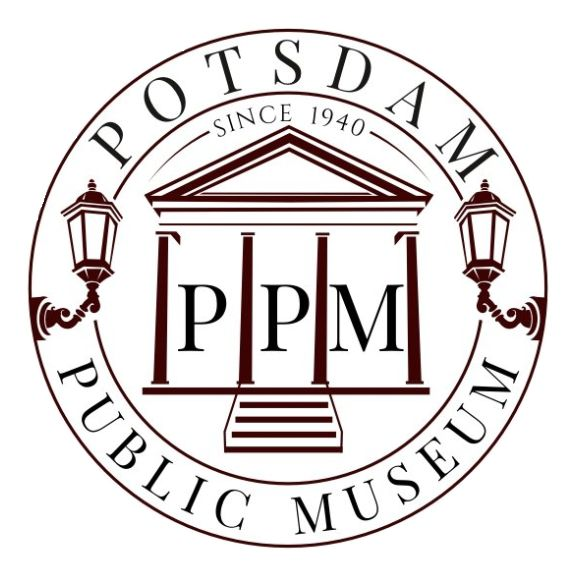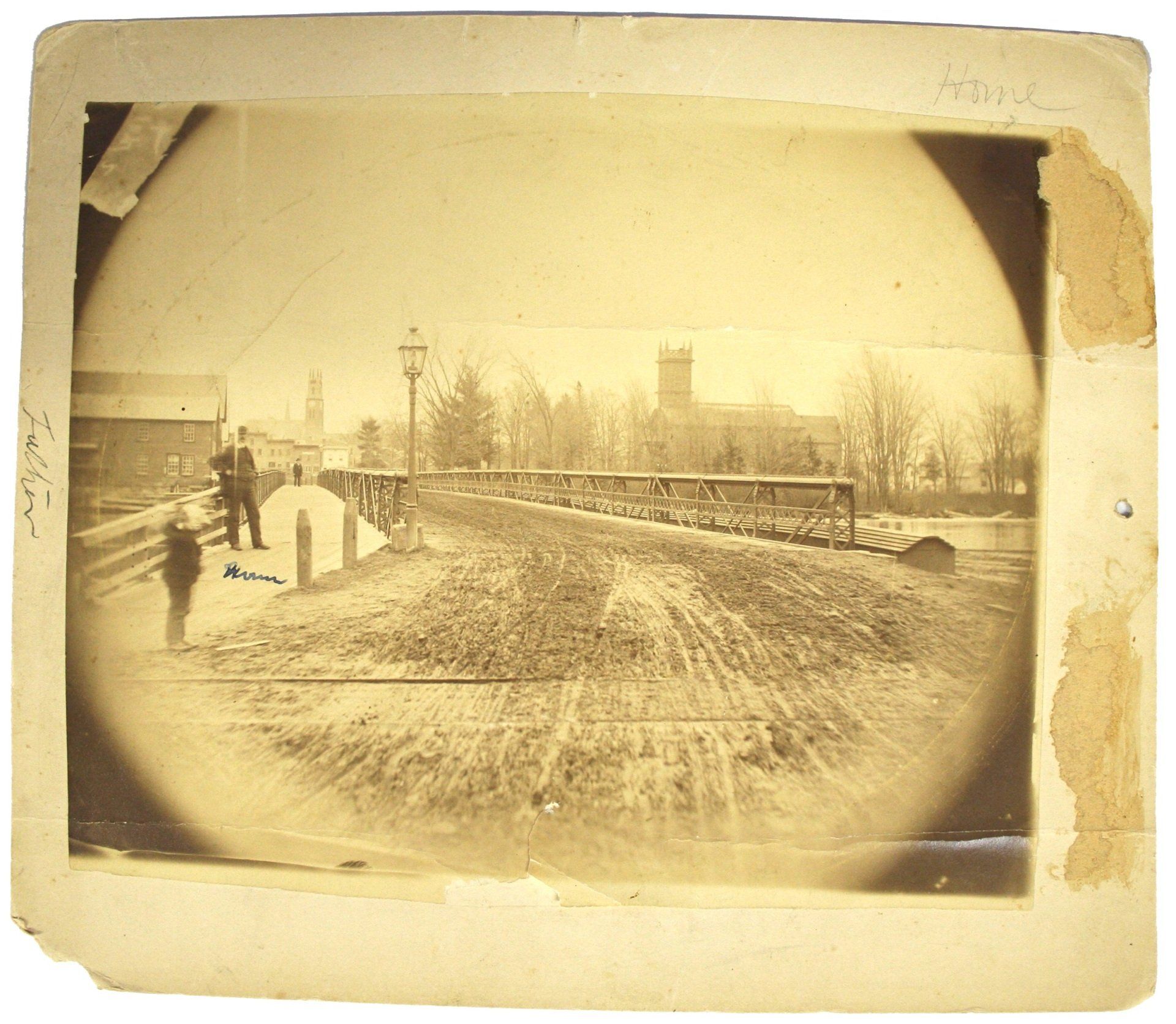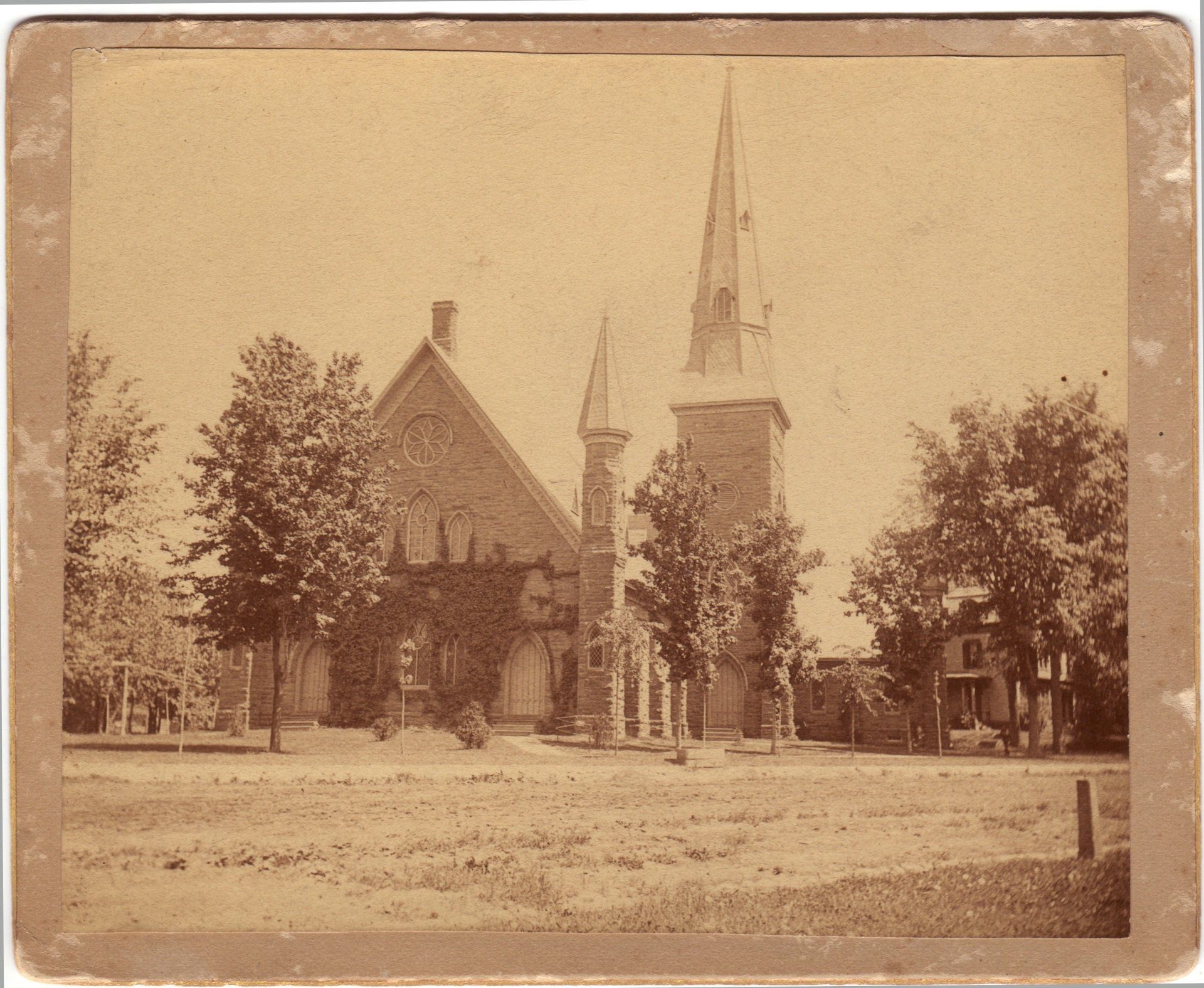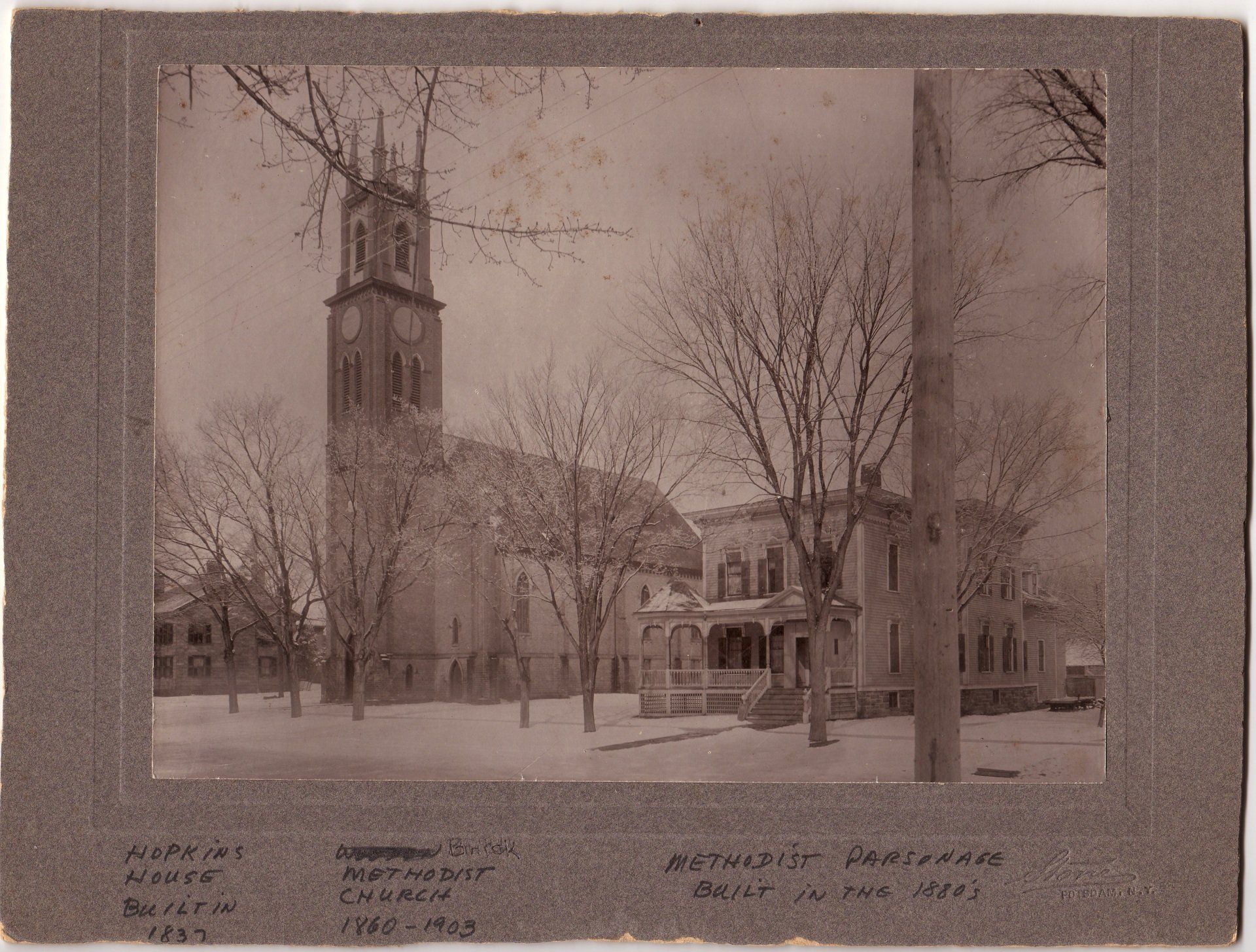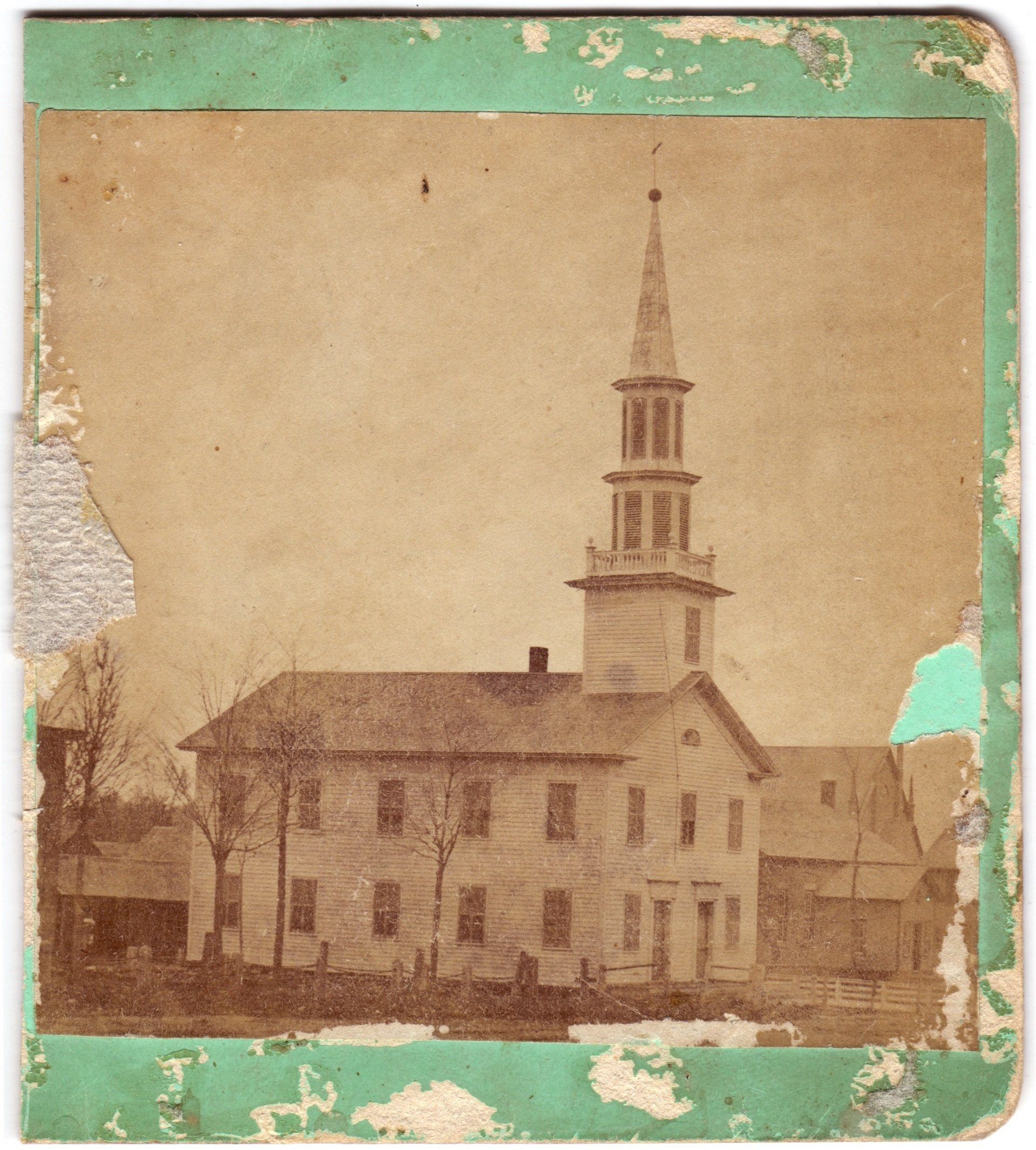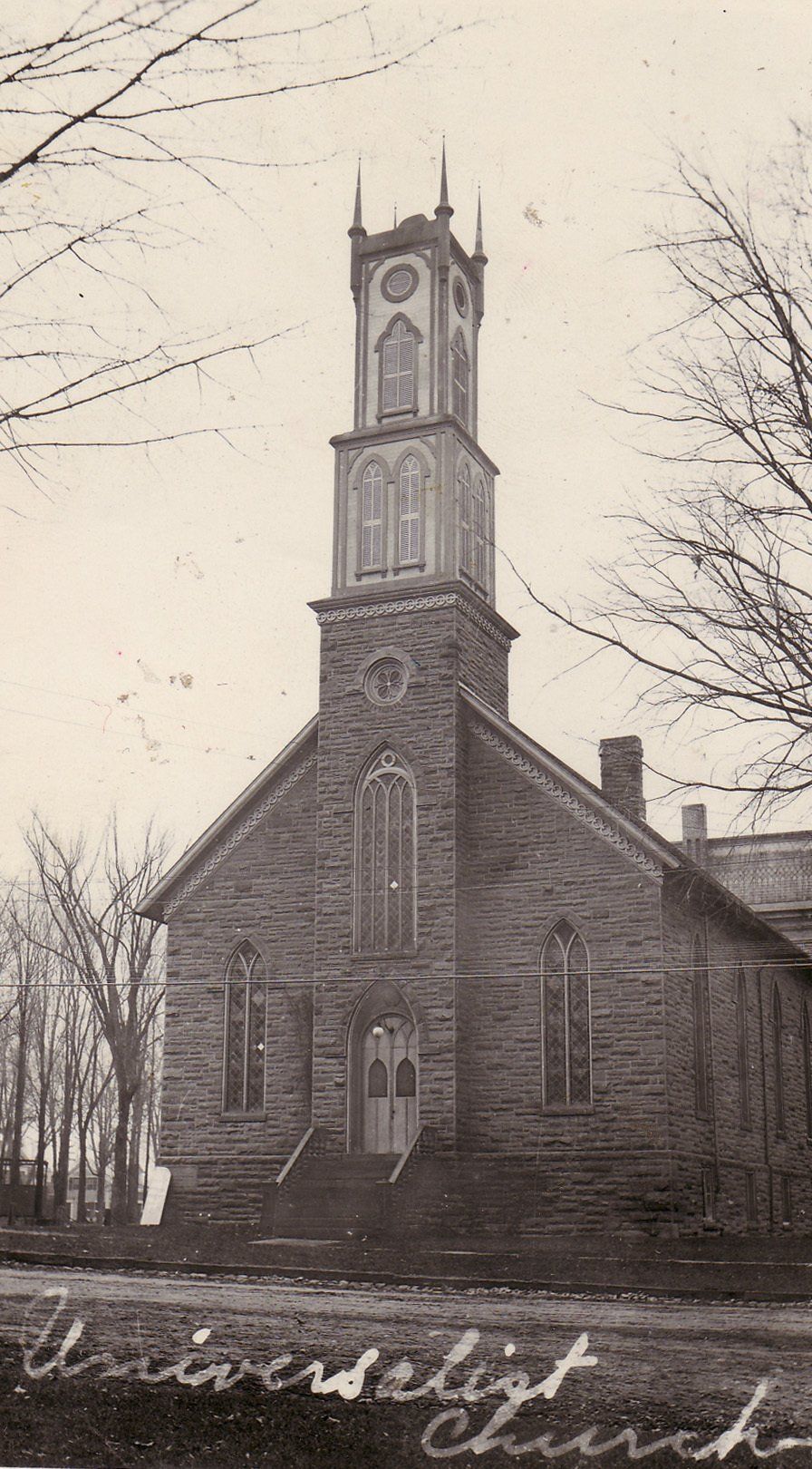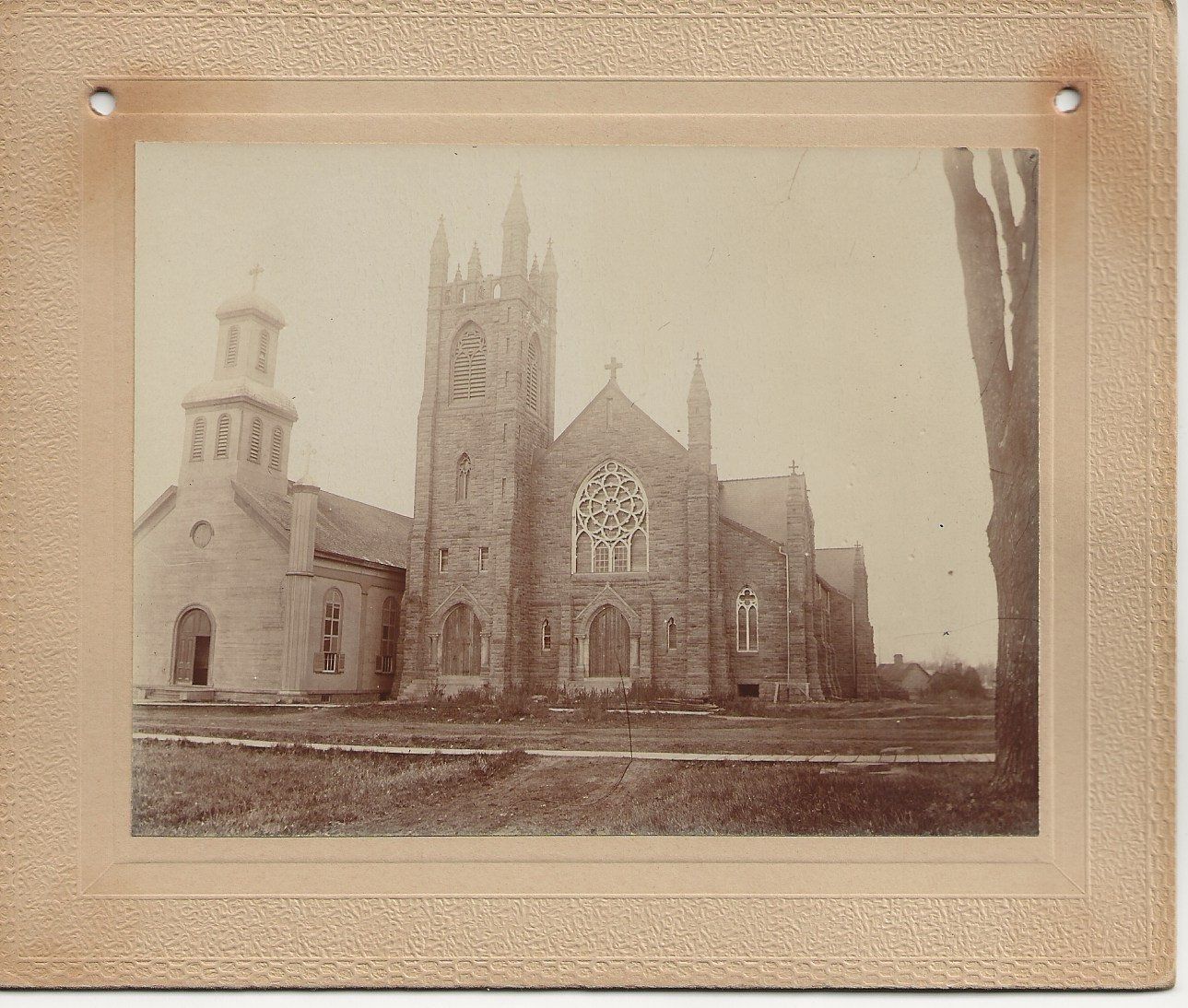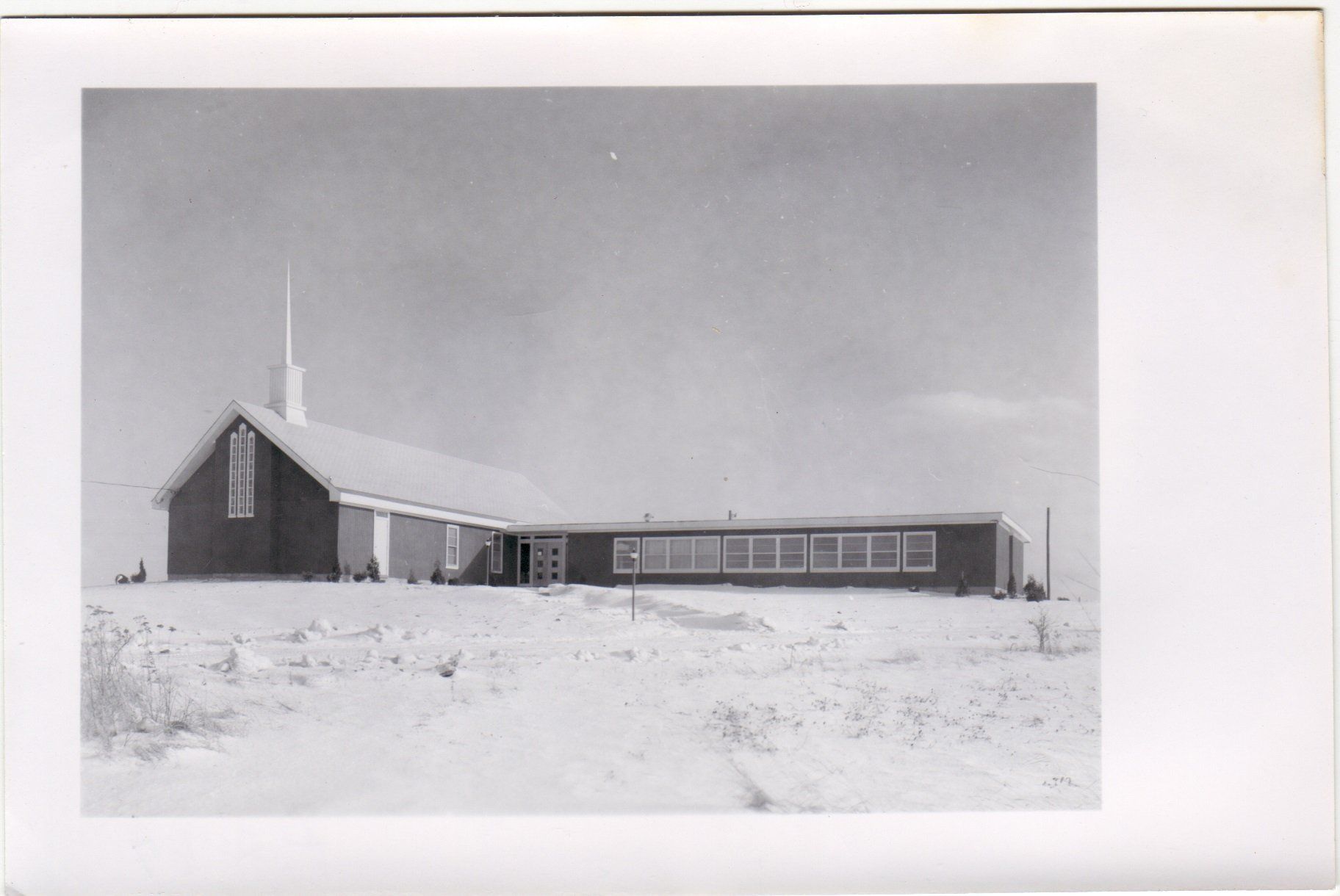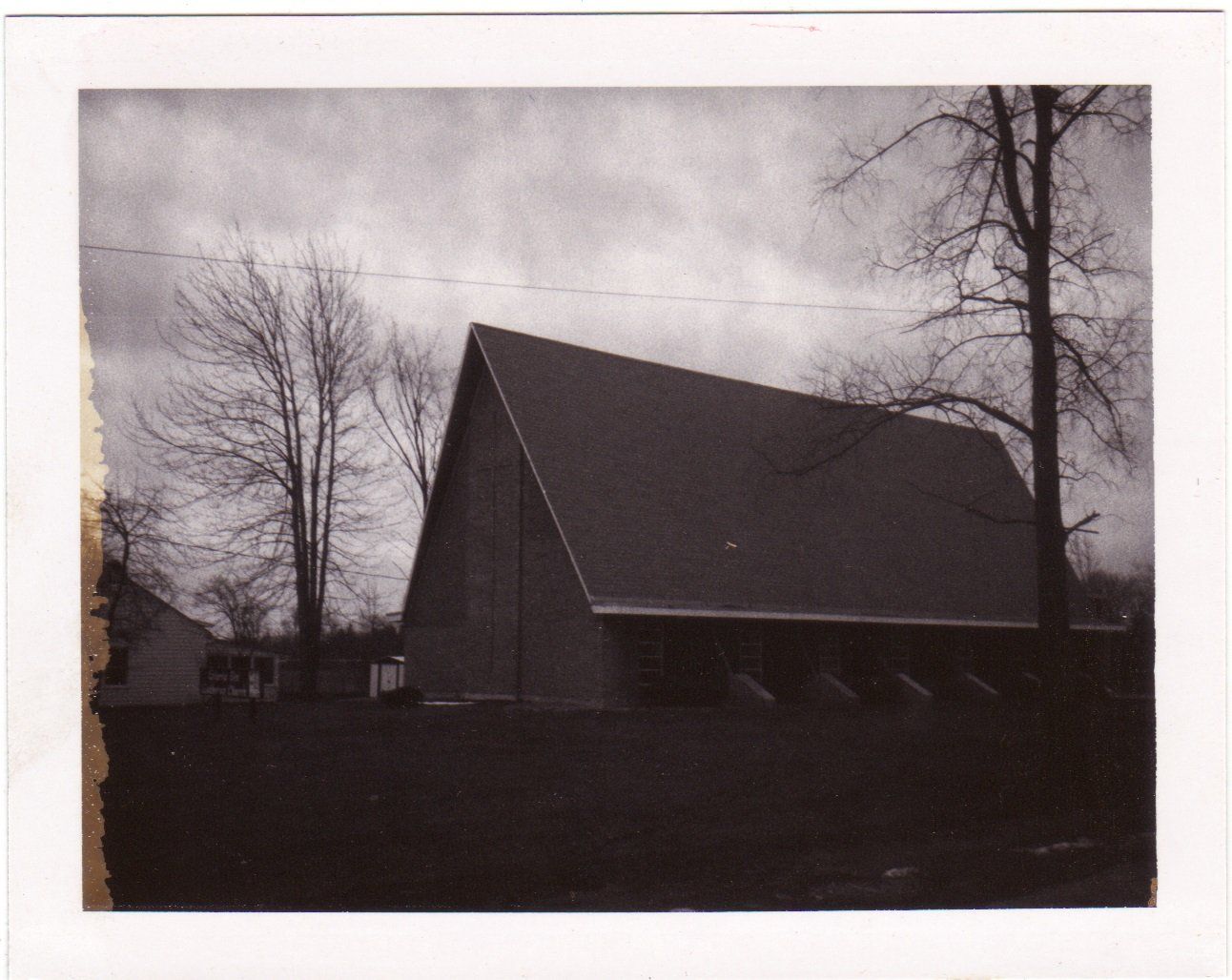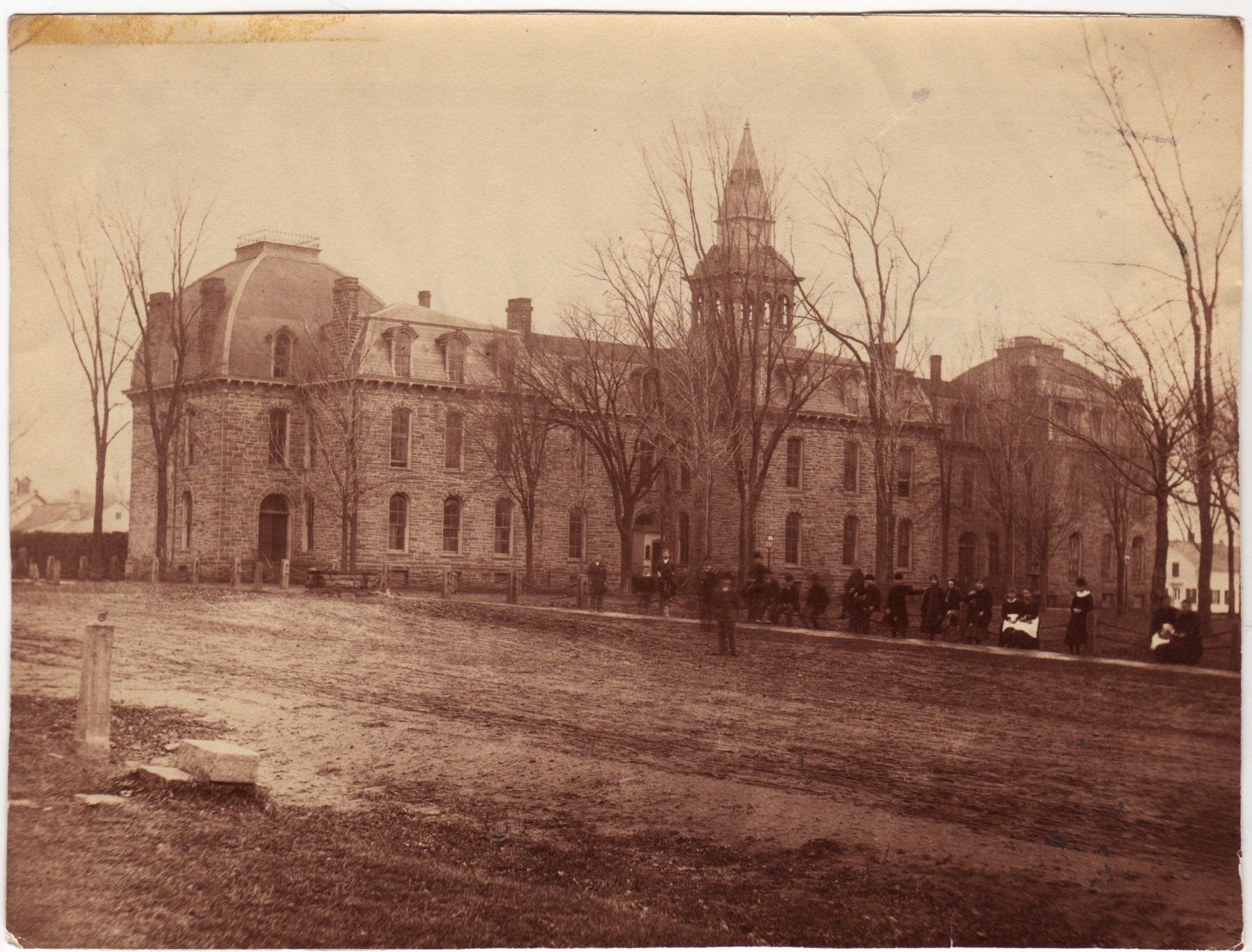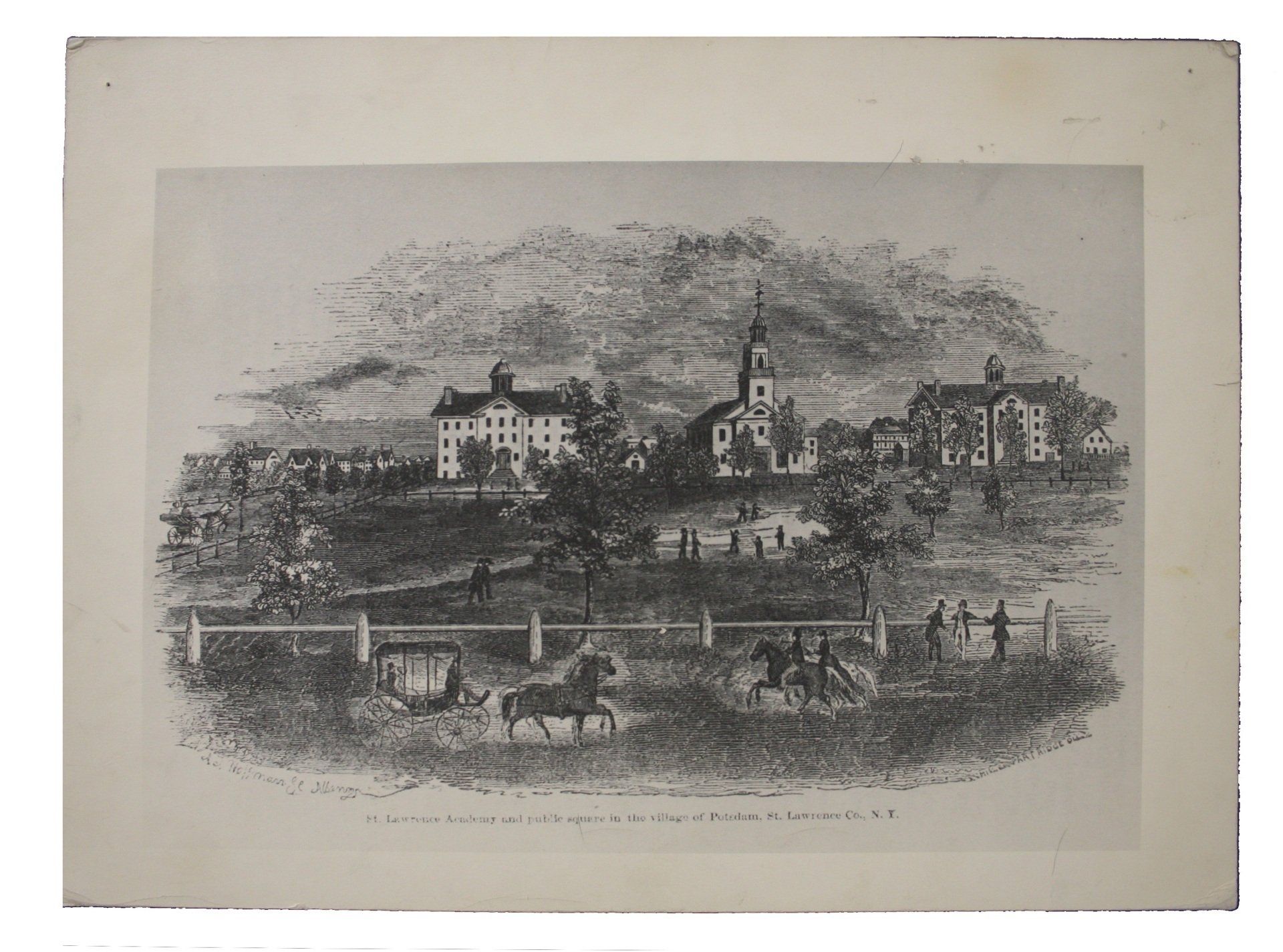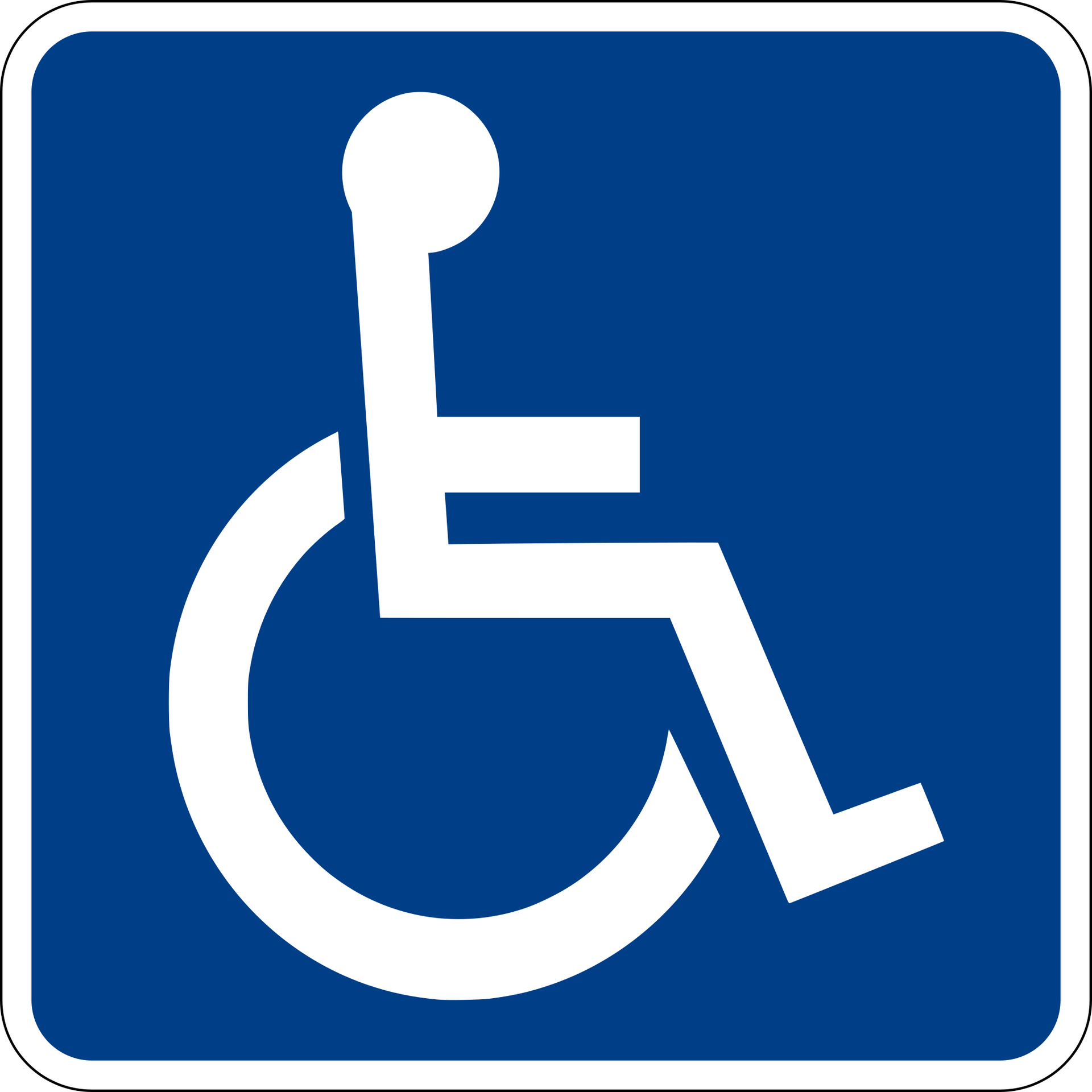Early History of Potsdam
by Marguerite Gurley Chapman
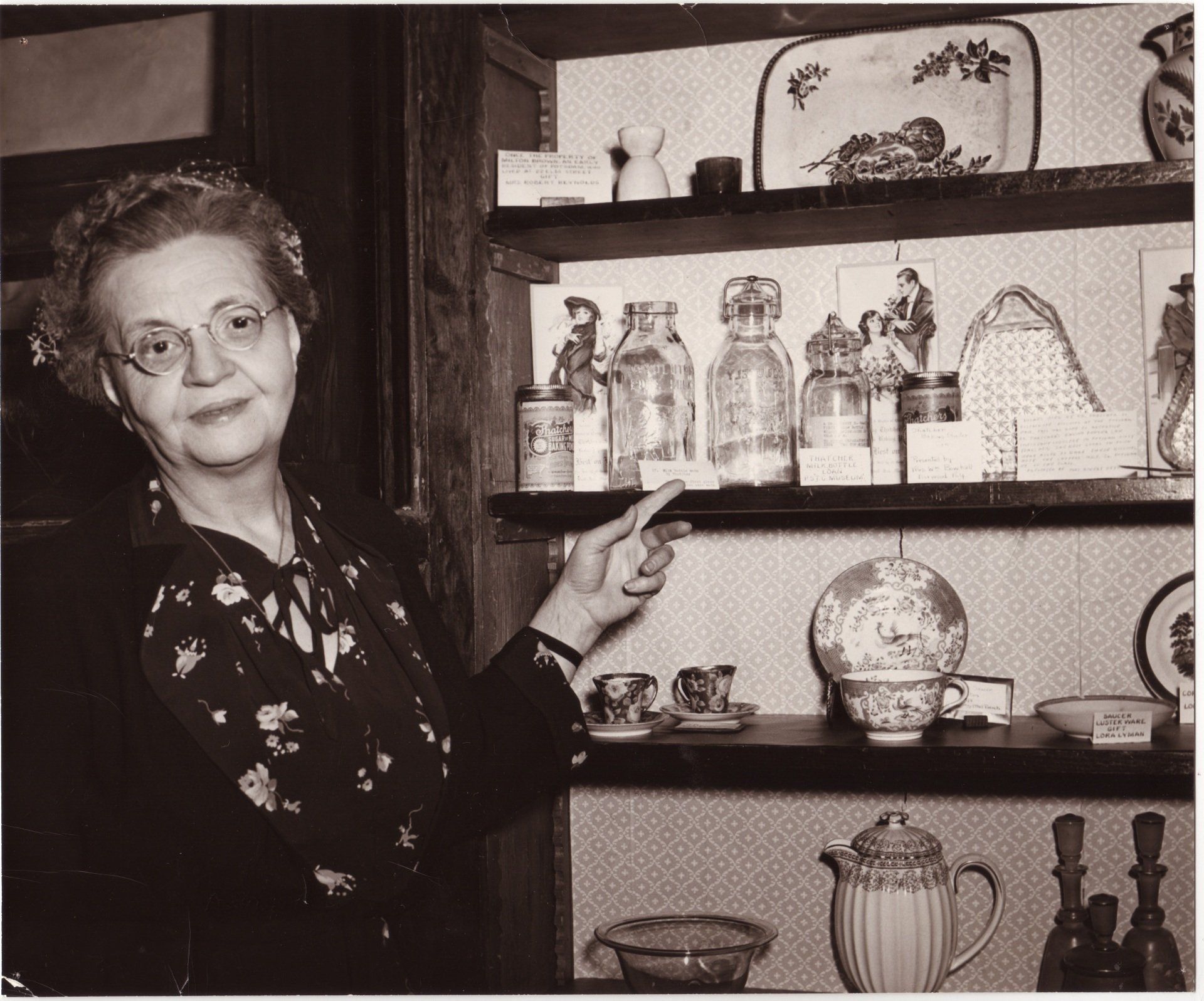
"This brief history of Potsdam was written by me and given before the St. Lawrence County Historical Association which met in the Civic Center, Potsdam on April 14, 1951. It was accompanied by pictures shown on the screen, so wherever the word (picture) occurs, the reader may find a picture in the picture album of Early Potsdam in the museum.
I have felt it unnecessary to include in this brochure many of the papers concerning early Potsdam but they may be read at the Museum by anyone interested.
The story of Potsdam sandstone was first given by me at an AAUW meeting, February 28, 1953, later over WSLB radio sponsored by St. Lawrence Historical Association and at a D.A.R. meeting.
This brochure is in no way a complete story of early Potsdam but I hope that it will help to interest both young and old in our heritage."
Marguerite Gurley Chapman
President, Potsdam Public Museum
November, 1955
First Printing 1956
Revised 1969 by Marguerite G. Chapman and Dee Little
LAND PURCHASES

Tsi tewate'nehtararénie's is the Indian name for the location where Potsdam now is. It means "The place where the gravel rolls under the feet in dragging up the canoe".
The history of Potsdam and St. Lawrence County dates from the close of the Revolution in 1783 when the newly acquired freedom developed a great desire for the extension of settlements. Almost nothing was known about this part of the State. Previous to the Revolution, great tracts on both sides of the Hudson and Mohawk Rivers had been granted by patents by the English crown. The most northerly of these was the Totten and Crossfield Purchase which forms the southern boundary of St. Lawrence and Franklin Counties.
In the map of Canada and the northern part of Louisiana in Jeffrey's "French Dominion in America", the country north of this tract is described as "the deer hunting grounds of the Iroquois". In Delisle's Atlas of 1785, this section and the northern part of Vermont is called 'Irocoisia' (Land of the Iroquois), and on another documentary map of New York it is called "Coughsagrage" (the beaver hunting country of the Six Nations). Across our two counties is written the following: "Through this tract of land runs a chain of mountains, which from Lake Champlain on one side, and the River St. Lawrence on the other side shows their tops always white with snow, but although this one unfavorable circumstance has hitherto secured it from the claws of the Harpy Land Jobbers, yet no doubt it is as fertile as the land on the east side of the lake, and will in the future furnish a comfortable retreat for many industrious families".
REASON THAT SETTLEMENTS WERE NEEDED
A need to promote the settlement of the state led the legislature to take early measures for bringing into market the unpatented lands. An act was passed May 5, 1786 providing for the sale of land, and creating land commissioners to dispose of the land.
Prior to this act thee were four main Indian trails through the country. The most important trail was the water route on the Mohawk River, across the carry where Rome now stands; down Wood Creek, across Oneida Lake, down the Oneida and Oswego Rivers to Oswego. First an Indian war trail, it later became the chief highway of the fur trade to Albany. The second was the route Sir John Johnson followed when he fled to Canada - from the Indian village (Caughnawaga) now Fonda, it led to the Sacandaga River, Racquette Lake, down the Racquette River to the St. Lawrence at the Indian Reservation of St. Regis. The fourth train was from Onondaga Castle, south of Syracuse to Clayton. With Carleton Island still in the hands of the British (and Ft. Oswegatchie) and Sir Johnson's Tory troops settling along the north bank of the St. Lawrence looking across with envy, this no man's land was a source of danger. The inhabitants of the Mohawk Valley had suffered terribly from raids over these trails. If the newly patched up peace were broken and there was every indication it soon would be, the horrors which they had undergone during seven terrible years of the Revolutionary War might well be repeated. To prevent this, it was imperative that this waste land be settled as promptly as possible. An inhabited buffer state was needed.
Following the act of May 5, 1786, townships of 64,000 acres, as nearly square as possible, were divided into mile square lots. In every township one lot was set aside and known as the "Gospel and Schools Lot" and another "for promoting literature". These to be as nearly central as possible.
TEN TOWNS
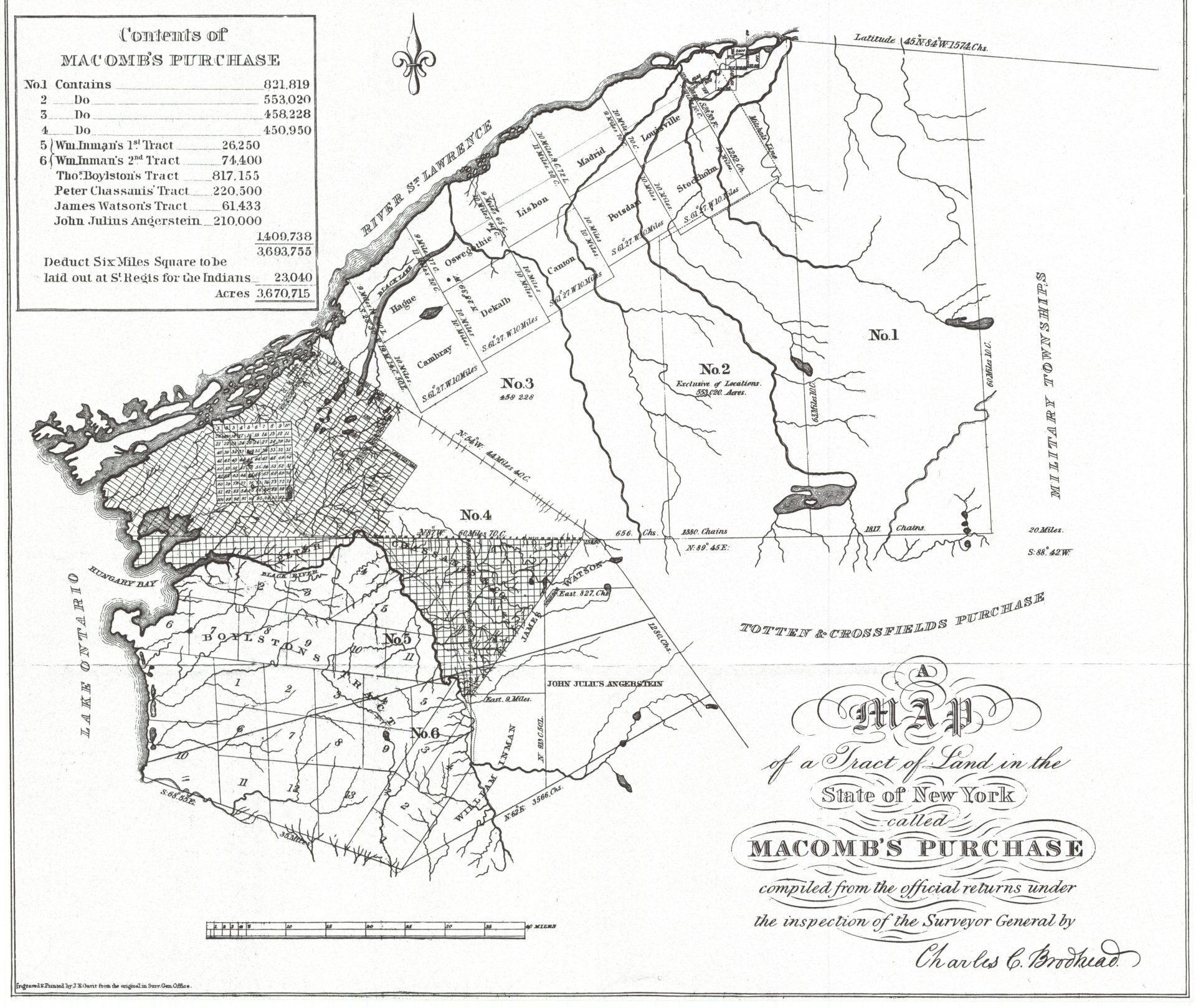
In 1787-May 25, the board passed a resolution creating 10 towns, 5 bordering the St. Lawrence River and 5 to the south of these and appropriate names given to them. The notice in the Albany Gazette, June 7, 1787, announced the sale of Public Vendue at the Coffee House (corner of Water St. and Wall St.) in New York City beginning Thursday, July 10 at 11 o'clock. The names of the townships were established by a formal resolution of the commissoners named for old world cities. 1. Louisville, 2. Stockholm, 3. Potsdam, 4. Madrid, 5. Lisbon, 6. Canton, 7. Dekalb,
8. Oswegatchie, 9. Hague (Morristown), 10. Cambray (Gouverneur). The principal purchaser was Alexander Macomb who had resided many years in Detroit and is said to have been a fur trader. In the course of his business he had often passed up and down the St. Lawrence and thus was acquainted with the general aspect and probable value of the lands and was probably better qualified to engage in these purchases than most of his associates.
SUBSEQUENT PURCHASERS
In 1792 Macomb became involved by transaction with men in New York by which he was compelled to assign his interest for the benefit of his creditors. Most of the purchase passed to Wm. Edgar and Daniel McCormick. On the same date, Edgar sold to Wm. Constable for $1500.00 the towns of Madrid, Potsdam, and the west half of Stockholm and Louisville. Constable by deed on Nov. 18, 1802, conveyed tracts of land to Garret Van Horne, David Clarkson and their associates excepting parts previously sold to Mathew Clarkson. The land was to be conveyed to the following proprietors, in separate parcels and by separate deeds as follows: Lavinus Clarkson, Hermon LeRoy, Nicholas Fish, John C. Clarkson, Garret Van Horne, Wm. Bayard, the executors of James McEvers, deceased, Thomas S. Clarkson, Levinus Clarkson, G. Van Horne. All subsequent titles in this town have been derived from the foregoing proprietors.
PURCHASE SURVEYED FOR WILLIAM CONSTABLE
In June 1799, Mr. Benjamin Wright, a noted surveyor of Rome, N.Y. (He surveyed the layout for the Erie Canal. See book The Mohawk) arrived at St. Regis with a surveying party of 7 members, Gordon Smith, Moses Wright, Ebenezer Wright (cousins of Benjamin Wright) Clark Putnam, E. Hammond and Benjamin Raymond. Each man had two axe-men and 2 chain-men.
Mr. Wright sent Gordon Smith up the Racquette (Indian name Nihanawate, meaning noisy water) to find out how far the river was navigable and what places were suitable for provision camps. He went as far as Norfolk by boat and proceeded by land to the present village of Potsdam where he spent the night under a pine tree on the rocks on the west side of the river (just across the 2nd bridge). Here, far removed from any settlement, he found a tuft of timothy grass. Much pleased with this familiar object, he hailed it as a harbinger of civilization and a herald sent forward to anticipate the future destiny of the country. In the fall the parties returned to Rome, some by water as they had come - that is by the St. Lawrence, Lake Ontario, to Oswego, the Oswego River to Oneida Lake and by Woods Creek, a short carry to the Mohawk and to Rome. Smith and Raymond cut their way thru the forest to Rome.
Again in May 1800, B. Wright, G. Smith, Moses Wright, B. Raymond returned by Lake Ontario to finish surveying the tract, returning to Rome in the late Summer.
FIRST SETTLERS
CLARKSONS BUY THE TOWN ON POTSDAM
On November 18, 1802 Wm. Constable sold to Garret Van Horne, David M. Clarkson and their associates the Town of Potsdam, 10 miles square, except a strip 2 miles wide on the northwest side next to Madrid. The western part of this 2-mile strip had been sold by Constable to Ogden and was known as the Ogden Tract and the eastern half to Charles Le Roux called the Le Roux Tract.
FIRST SETTLEMENT IN POTSDAM

The first settlement of the Town of Potsdam was begun by Benjamin Raymond, the agent for the proprietors (Clarksons, etc.) in 1803. In May of that year he left Rome with a bateau laden with mill irons, provisions and six men, and proceeded by the difficult and tedious route of Wood Creek (Locks at Wolf Rift in the canal connecting the Mohawk with Wood Creek and Oneida Lake were completed in 1797 according to Eastman’s History of New York State, 1832, page 359, Museum book), Oneida Lake, Oswego River, Lake Ontario, and the St. Lawrence River to Point Iroquois above Waddington, where he left part of his load and proceeded to open a way through the forest to Potsdam. He struck the river some distance below; here he built a raft and ascended ½ mile to the falls where he arrived in June. Here he built a temporary hut and commenced building a sawmill which he got into operation that year (1803). During the summer, lines for roads were surveyed out in different directions, and some of them among which was the route from Stockholm through Potsdam to Canton, was so far cleared of underbrush as to allow the passage of teams. The frame of the sawmill was the first building erected in Potsdam. Mr. Raymond had for two or three years traversed all this country, surveying, and was sensible to the superiority of the soil here before commencing a settlement.
FIRST FAMILY IN POTSDAM, 1803
Ebenezer Patterson was the first man to move his family into the town. They lived in Raymond’s Land Office Building across the river and boarded the men who were surveying. During the year 1803, Mrs. Patterson was reported to have been the “handsomest woman in Potsdam”.
MORE SETTLERS, 1804
In 1804, Mr. Raymond returned with his family coming by the way of Long Falls (Carthage). (Read “North of the Mohawk” for this section). His wife, Hannah Wright Raymond, was a sister of Ebenezer Wright. The same year – 1804 – William Smith (ancestor of Howard H. Smith. The deed of his land, purchased September 19, 1803, recorded January 3, 1806, is in the Museum, loaned by H. H. Smith), Gurden Smith, Benjamin Sweet, David French, Joseph Bailey, Bester Pierce, Roswell Parkhurst, William Bullard, and others came, some to select farms and to begin improvements preparatory to moving in; others moved in directly. During the summer, a fine grist mill was built but not put into operation until 1805. Ebenezer Wright, brother-in-law of Mr. Raymond was the millwright.
The first baby to be born in Potsdam was Orpha Maria, daughter of William Smith, born April 20, 1804.
The same year (1804), Levi Swift, Charles Cox, Asa and Ira Perrin, and many others came and took up farms. In that year much of the land around Potsdam village for quite a distance was contracted for actual farms.
The first frame building in town was erected by Mr. Raymond in 1804 on the west side of the river and was known as the “Fox and Geese” house because of its plan.
BEGINNINGS OF THE "UNION", 1804
On the 28th of November 1804, William Bullard and associates took up a tract of 2427 acres 2 miles north of Potsdam costing $8,656.04 with a view of establishing a colony having a unity of interests and on a plan he had drawn up in New England. Some withdrew, others joined. In May 1807, they formed an association styled “The Union”. The property was held in common stock, each sharing equally in the proceeds, according to the amount of labor invested. The company prospered to some degree. After dissolution, the land was divided and most of the members continued to reside on the tract.
RAYMONDS RETURN TO POTSDAM IN 1805
Evidently the Raymonds went back to Rome in the fall of 1804 and returned again in the spring of 1805, coming by sleigh and team by Oxbow on the Oswegatchie. The snow had left by the time they reached Oxbow so he made a raft of 30 pine logs on which they put their sleighs, goods and families, and proceeded down the swollen stream. At night they reached Richville. On the night of the second day (April 1), they reached Cooper’s settlement in Dekalb. The horses were sent around by the state road in charge of Sewall Raymond, a cousin of Benjamin Raymond.
That same year, 1805, Horace Garfield, Jabes Healey, Anzel Bailey and his brothers came. Also most of those who formed the “Union” at Unionville. On the west side of the Norwood road, a little beyond the turn to Unionville, is the “Union” cemetery. The map of burials in this cemetery is in the Museum. John Smith and others by the name of Smith came from Tunbridge, Vermont, relatives of Joseph Smith, the founder of Mormonism. John Smith was high priest of the Mormon settlement at Salt Lake City in the Utah Territory in 1853.
BRIDGES, CHURCHES , AND SCHOOLS
BRIDGES AT POTSDAM
Before the first bridge was built at Potsdam in 1809, the Racquette was crossed by a raft just below the falls. It was usually tied to the west bank for that was where the few people lived. People coming from the east had to call across and someone would go across for them.
In 1809, the first bridge was built on the side of the present one. This one lasted until 1830 when a second one was built which lasted until 1849. The new one built in 1850 lasted until 1920. This is the iron bridge many of us remember; a picture of it is in the Museum collection. The present bridges were built in 1920.

St Lawrence Academy
In 1810, Mr. Raymond erected a building on Union Street for a school and place of worship. Church services were first held in Mr. Raymond’s own home. First, for his own family and gradually increasing in members as friends asked to join the Raymonds. The first teacher-minister was engaged in January 1811, a Mr. James Johnson of Lynn, Massachusetts, a graduate of Harvard. The two original letters written by B. Raymond to hire Mr. Johnson are framed and in the Museum. In 1811, when services were first held in the little new building, the group called themselves ‘St. Paul’s Society’. Later, this society having been disorganized, ‘Trinity Society’ was formed: John C. Clarkson, Horace Allen, Forrest Morgan, Ezra Barnum, Samuel Partridge and Daniel Shaw, trustees. The name was considered ‘too stylish’ for a group of Puritans, so the name was changed to ‘The First Presbyterian Society’ on December 16, 1820. Azel Lyman, Sewall Raymond, and Forrest Morgan were trustees. When the original schoolhouse proved inadequate for the growing student body, new buildings were constructed on either side of the Presbyterian Church.
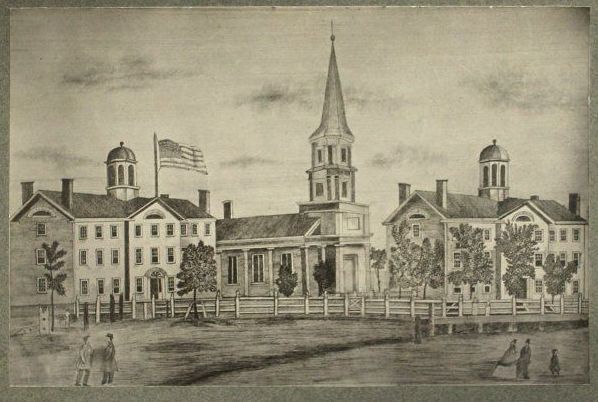
The Churches
In 1820, the Presbyterians decided to build a white wooden church on the Gospel Lot at a cost of $4,500. This was in the center of the Park where Clarkson’s Snell Hall is today. The frame was up on July 1st, 1821. The raising was a great event. An ample lunch was provided by the people of the church with plenty of good liquor to wash it down. Total abstinence was not yet considered a religious virtue. The following story was related by the Rev. George R. Sawyer to William H. Wallace Esq. right after the erection of the single tall timber. Ansel Paine mounted to the top, more than 100 feet high, stood erect on the end of the timber, swung a whiskey bottle around his head and then flung it to the ground where it landed unbroken in the mud. He then, for a moment, reversed his position, stood on his head on the end of the single timber and finally descended to earth.
The white church was dedicated in February 1822 and used until 1853 when it was replaced by a brick church at a cost of $10,000. In 1867, this was sold to the State for $10,000 and incorporated in the new Potsdam Normal School, forming the central part. In 1868, the present church of Potsdam sandstone, Elm Street and Lawrence Avenue, was started. It was completed in 1872 at a cost of $47,000.
The First Methodist Church was organized in 1821 and soon built a white wooden church on the site of the present Fire Station. This church served until 1860 when it was sold to the village to be replaced by a firemen’s hall. The Methodists erected their second church, a brick one on the site of the present church (left). The parsonage was built in 1882. This church became too small and in 1903 the present structure of Gouverneur marble (right) was built. The former church building was remodeled, with the steeple being served until 1913 when the present fire station made of brick was built.

The Baptist Church was organized January 9, 1824. The present church is the original building, with improvements being made from time to time. It was built in 1858 at a cost of $5,000. It was of wood painted gray. It was improved in 1875 at a cost of $2,500. The parsonage was built between 1875 and 1878. The wooden structure has been covered with asbestos shingles.
The Universalist Church was incorporated in October 2, 1825. The old white church was built in 1835 (pictured left) and replaced by the church of Potsdam sandstone in 1876 at a cost of $12,000 (pictured right). Services were held until 1933 when a few remaining members voted to give the property to the village, the building for a library, the land between the church and town hall to be part of the new Civic Center. The church was remodeled in 1934 when the Civic Center was built and the library moved from Market Street location in 1935.
The Roman Catholic Church first held services in 1832. The first mass was said in the house of a Mr. Burk on Pierrepont Avenue. In 1841, a dwelling house (12 Clinton Street) to which the name “St. Mary’s” was given was purchased and used as a church. In 1857, Potsdam became an independent parish and in 1859 the large gray wooden church was built at the corner of Lawrence Avenue and Clinton Street. The present sandstone church was built in 1898, dedicated December 18, 1900; redecorated and opened December 17, 1950. The brick parsonage was built in 1866 and the present Rectory in 1918-19. The first resident priest was Rev. James Keeveny about 1856.

The first Episcopal services were held in Potsdam in 1818, the Rev. Amos Baldwin went on alternate Sundays to Ogdensburg and Waddington, and on Wednesdays to Russell, Canton, Potsdam, and Parishville. Similar service from Ogdensburg and Waddington until November 11, 1834 when Rev. Richard Bury became the first resident minister. He was here until 1837 and lived in the LeRoy home on LeRoy Street where the Merritt apartment now stands. On the 23rd of March, 1835, at a meeting held in the North Academy Building, the parish was organized under the name of Trinity Church. On the 10th of April, 1835, John C. Clarkson wrote to the proprietors as follows: “A few weeks ago we organized our Parish by the name of ‘Trinity Church, Potsdam’. I should now be pleased to receive from the Proprietors their written authorization to convey to the vestry, as a gratuity, all this part of Fall Island in the village of Potsdam lying south of the Turnpike, as a site for our Episcopal Church.”

In 1837, the Catholic Apostolic Church was organized. The church stood next to Mr. Dona’s house, corner Maple Street and Pine Street where the gas station now is. The church was built in 1843, enlarged in 1874, and torn down sometime after December 1920 when the church was given up. A few families of this church still live in Potsdam including Herbert Bicknell and Bernetta Seeley Elliott. David Lewis invited two evangelists here in 1837 when the church was formed. W.J. Seeley and W.F.B. Seeley were prominent members. Noah Perrin was Chief Elder and acting Pastor until his death in 1876.aragraph
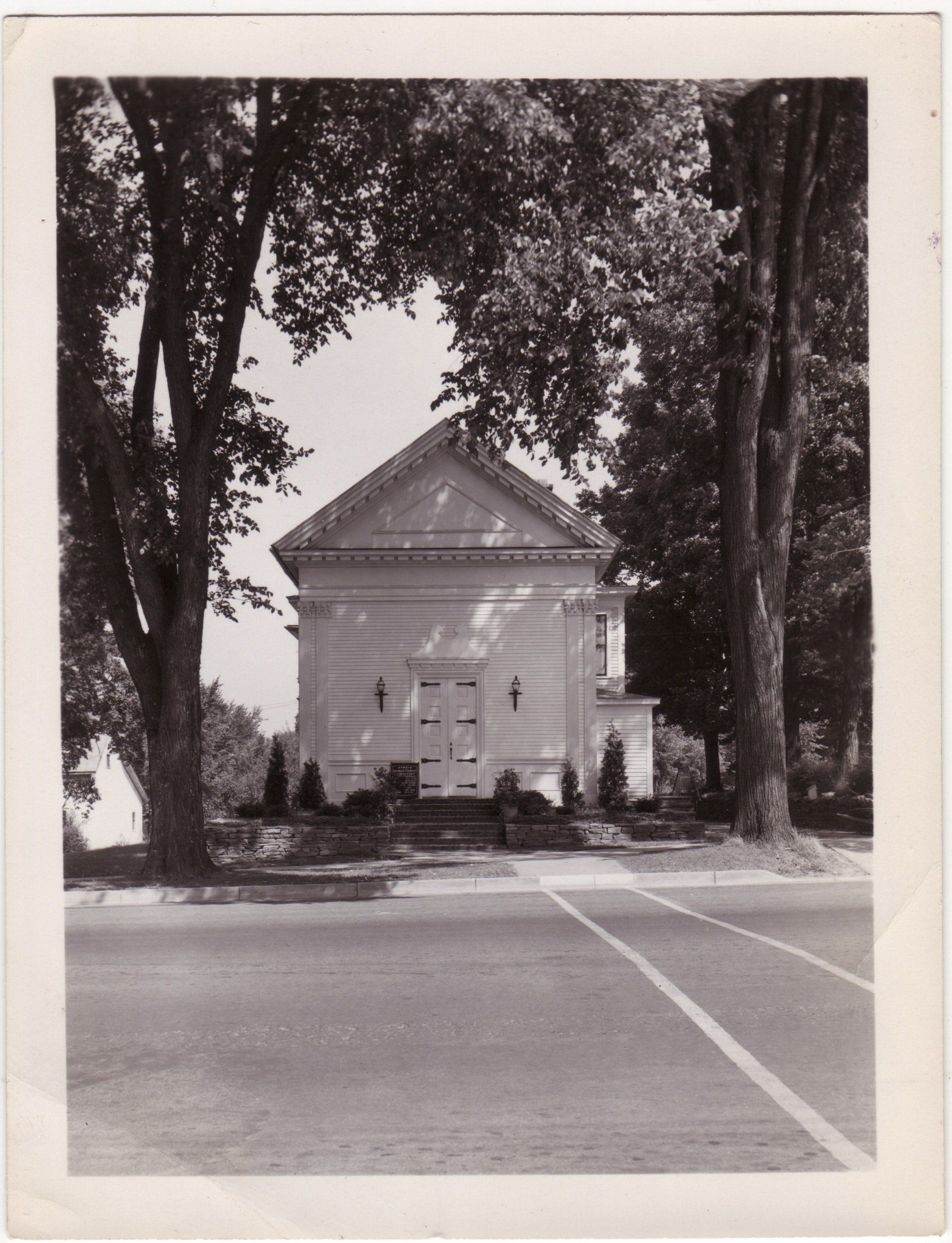
The Christian Science Church was organized in 1891. The first services were in homes, including the home of M.V.B. Ives from 1896 to 1899 and the home of Miss Julie Ettie Crane from 1899 until 1901. In 1901, the church rented the Dayton House, corner Main and Pierrepont. It had Reading Rooms from 1901 to 1919 over Stone’s Gallery, corner Market and Munson Streets, where the National Grid office is now. The church purchased the Dayton House in 1919 and held its first service September 7, 1919. In 1946, the present church was purchased from Julie Walling and the first service held on Thanksgiving Day, 1947.

Three new churches have made their appearance in Potsdam during the past 20 years. The Church of the Nazarene, corner Market and Cottage Streets, was built in 1951 by Mose LaValley of Potsdam. Mr. LaValley was seriously ill and made a promise that if he got well he “would repay God by building a church”. He constructed the church entirely by himself and donated it for the use of the Nazarenes. Services began June 10, 1951.
In 1963, the Emmanuel Baptist Church was built on the May Road, near Haggarty Road. The first services were held in the spring of 1964.
The newest church in Potsdam is the Gloria Dei Lutheran Church, located on outer Elm Street. It was built in 1967-68 and was dedicated December 8, 1968.
SCHOOLS
Let us now return to the early 1800s and trace the growth of our schools from the “Old Academy” on Union Street built in 1811. By 1825, this building became too small and the first building of the St. Lawrence Academy was built on the Literature Lot north of the white wooden Presbyterian Church. This was of sandstone, the slab and binder type of mason work. Ten years later, in 1835, the South Building of the Academy was built. This building was used as teacher’s training. It is recorded in history that no town showed more energy or industry in promoting improvements than Potsdam. When the State decided to establish a Normal School in this area, Potsdam was chosen as the site because of the fine record the St. Lawrence Academy had made in teacher training. The Academy buildings were sold to the state. The first Normal School was built in 1867, and rebuilt in 1917. The Normal School became Potsdam State Teachers College in 1942 and the college moved to its Pierrepont Avenue campus in 1948 and that same year became part of the State University system. The Normal School building on Park Street was sold to Clarkson College and today houses the administration and classrooms.

Clarkson College was founded in 1896 by Miss Elizabeth, Miss Frederica, and Miss Levinia Clarkson, in memory of their brother, Thomas S. Clarkson, who was killed in a quarry accident in 1894. The college’s first building “Old Main” was built of Potsdam sandstone in 1896. The college expanded to the Clarkson estate on Maple Street in 1956 and has also constructed a number of new facilities on Main Street.
Articles about the local elementary and secondary schools written by Grace and Ethel French and about the St. Lawrence Academy written by me are on file in the Museum.
